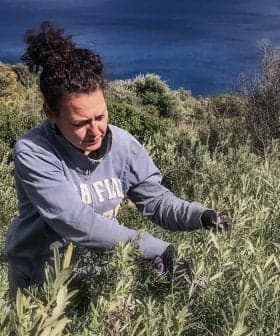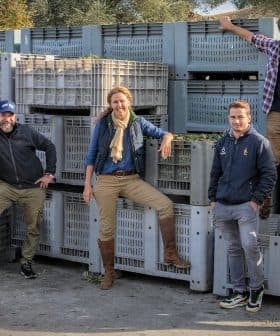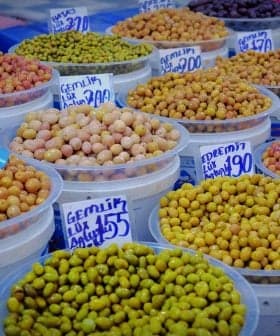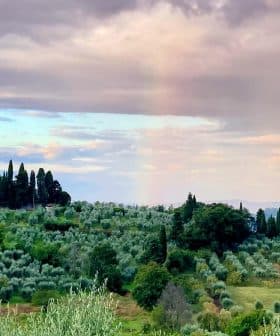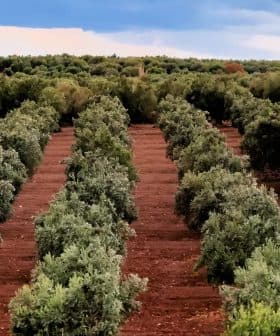Europe Confronts Worst Drought in 500 Years, Officials Say
Countries in southern and western Europe are bearing the bunt of the drought, with varying impacts on olive farmers and society writ large.
Europe is facing its worst drought in 500 years, with western and central Europe experiencing virtually no rainfall in the past two months. The drought has severely impacted olive oil-producing countries like France, Italy, Portugal, and Spain, with production expected to fall significantly due to water shortages and extreme heatwaves. Efforts are being made to invest in irrigation infrastructure and water-saving measures to combat the effects of the drought on agriculture.
Europe is experiencing its worst drought of the past 500 years, according to the European Commission’s Joint Research Center.
“We haven’t analyzed fully [this year’s drought] because it is still ongoing, but based on my experience, I think that this is perhaps even more extreme than 2018,” Andrea Toreti, a senior researcher at the European Drought Observatory, told a conference last week.
“Just to give you an idea, the 2018 drought was so extreme that, looking back at least the last 500 years, there were no other events similar to the drought of 2018, but this year I think it is really worse than 2018,” he added.
See Also:Droughts Are More Frequent, Lasting Longer and Accelerating Water Shortages, U.N. SaysWestern and central Europe have recorded virtually no rainfall in the past two months, and the Joint Research Center warned that conditions will likely worsen over the next three months.
Officials at Europe’s leading science and knowledge service estimated that 47 percent of the 27-member bloc is at risk of being impacted by the drought, with farmers across four of the continent’s largest olive oil-producing countries among the most severely affected.
France, Italy, Portugal and Spain – which combined to yield 88 percent of the European Union’s olive oil production in the 2021/22 crop year – have felt the impacts of an unusually dry winter and spring followed by several extreme heatwaves.
In Spain, the world’s largest olive oil-producing country by a significant margin, the country’s reservoirs are at just 40 percent of their normal capacity. Officials have responded by putting water restrictions in place.
In Andalusia, the most fruitful olive oil-producing region in the world, the drought is particularly pronounced. Local reservoirs are at just 25 percent capacity. Underground aquifers and natural bodies of surface water are also running low.
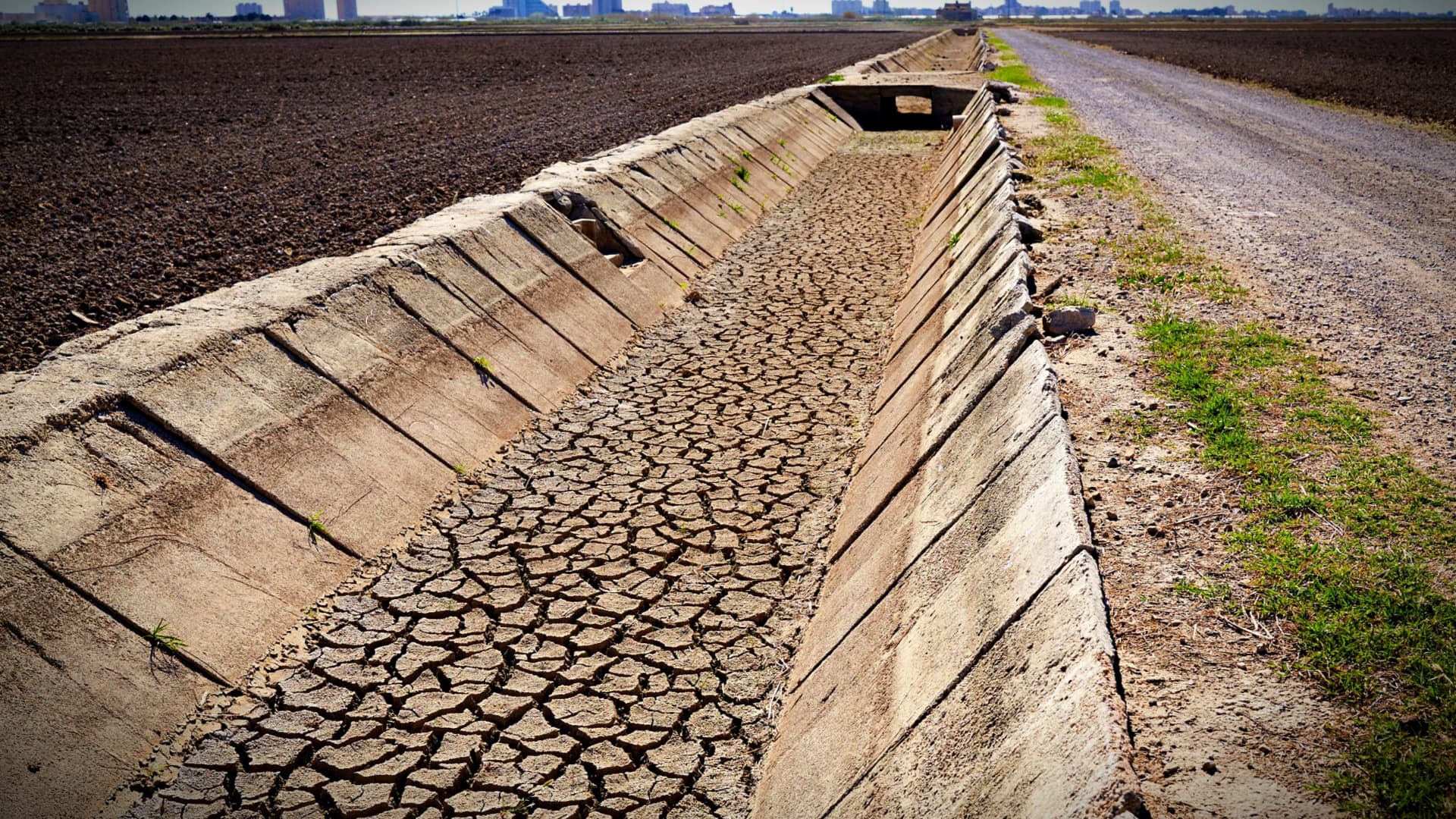
Dried irrigation ditch in Albufera rice fields of Valencia
Olive growers in the region have warned that the harvest from rainfed groves will likely be less than 20 percent of the average of the previous half-decade. Yields from irrigated groves are also expected to fall by more than 50 percent.
The Association of Young Farmers and Ranchers (Asaja) predicts that Spain will produce 1 million tons of olive oil in the 2022/23 crop year, the lowest total since 2013/14.
A recently-published study in Nature Geoscience found that parts of Spain are the driest that they have been in more than 1,000 years.
The drought has been just as unforgiving on the west coast of the Iberian Peninsula in Portugal. Rainfall in Europe’s fourth-largest olive oil-producing country has also been historically sparse.
According to the Portuguese Institute of the Sea and the Atmosphere (IPMA), Portugal has received half of the rainfall it normally does during a hydrological year, which runs from October to September.
Overall, the 2021/22 hydrological year is on pace to be the second driest since records began in 1931, with just 419 millimeters of rain falling to date. Only 2004/05 was drier.
Gonçalo Almeida Simões, the executive director of the Alentejo Olive Oil Association, told local media that olive growers across the country were feeling the effect of the drought.
Rainfed groves – which represent 30 percent of all Portuguese olive groves – were being hit the hardest by the drought and expect to see significant production declines.
On the other hand, irrigated groves are still being supplied with adequate amounts of water and are likely to see more minor production decreases.
As a result, officials in the northern Portuguese region of Trás-os-Montes have pledged to invest more money in irrigation infrastructure to help producers deal with severe water deficits.
On the other side of Spain, France is also facing its “most severe” drought on record.
Insufficient precipitation across the country – specifically in the mountainous southeast where snowfall at the beginning of the year melts during the summer to replenish rivers and reservoirs – combined with scorching heatwaves, which have led to evaporation from those unreplenished rivers and reservoirs, have caused the government to put water restrictions in place across the country.
Less than 1 centimeter of rain fell on average across France in July, which has resulted in shortages of drinking water and the possibility of disruptions at some of the country’s nuclear power plants.
Farmers across the south of the country have been told to reduce the amount of water they are using to irrigate their crops and, when they do, to irrigate at night to avoid evaporation.
In the southern region of Occitaine, an olive farmer in Gard told local media that the drought and heatwaves have desiccated his olives. Bruno Nicolas said he even tried to dig a well in an attempt to reach the aquifer but could not afford to dig deep enough to reach it.
Overall, producers in France expect to see olive oil-production fall by up to 50 percent as a result of the drought.
Meanwhile, drought and poor infrastructure have led Italy’s agriculture minister to warn parliament that one-third of the country’s agricultural production is at risk of failing.
The historically low water levels of Lake Garda and the Po River have snatched most of the international headlines, but drought in the southern Italian regions of Puglia, Calabria and Sicily are expected to result in olive oil production falling by one-third.
However, the drought in Puglia has had some very different consequences from the rest of Europe. The increasingly arid climate in Italy’s largest olive oil-producing region has dried out the soil and lowered its ability to retain water.
Heavy rainfall experienced by the region earlier in the week resulted in landslides and flooding, which has caused an estimated €200 million of damage to olive groves and other crops.
Experts expect these severe summer squalls to become increasingly frequent as the region receives its annual rainfall in more concentrated periods of time.
Coldiretti, a farmers’ association, said southern Italy needs to invest in infrastructure to capture and save this rainwater while preventing it from damaging crops and rural infrastructure.
“Faced with the tropicalization of the climate, it is necessary to reduce soil consumption and organize to collect water in the wettest periods to make it available in times of difficulty,” Coldiretti wrote in a statement.
“This is why maintenance, saving, recovery and recycling of water are necessary with infrastructural works, strengthening the network of reservoirs in the region, creating basins and also using the former quarries to collect rainwater in order to manage its use when it is needed,” the association concluded.
Share this article


